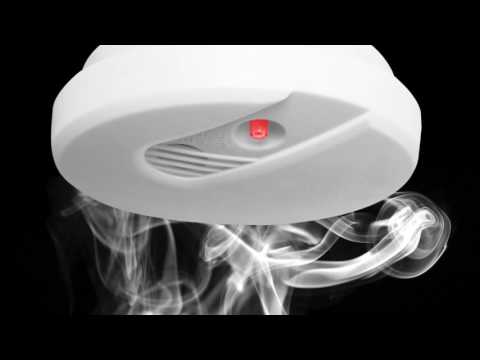Part 1: Smoke Alarms
A common subject that arises when visiting with our customers is about life safety devices. People ask about where smoke detectors should be located; how many they should have; or if they need a Carbon Monoxide Detector. These are all excellent questions.

Residential fires account for 73% of all fire-related fatalities in Canada, and 25% of all residential fires originate in a bedroom. Post-fire inspections often reveal dated or disabled safety devices, exposing a hard truth: the proper maintenance of safety devices is often overlooked. The statistics are sobering: in fully 56% of buildings where fire occurred, the smoke detector did not function as intended.

Because smoke rises, it is recommended you place the alarms on or near the ceiling. You should always consider high points in your home, or rooms that may be blocked off from other parts of the house. If there’s a fire, where is that smoke going to go? If there’s doors involved or walls, that all affects the movement and development of smoke. A smoke alarm only benefits you if it is working, and smoke detectors placed in problematic areas or that become a nuisance by alarming incessantly due to poor location end up being disabled by the occupant.
A smoke alarm should be installed between each sleeping area and the remainder of the building or where a sleeping area is served by a hallway, installed in that hall. A common thing that we notice on inspections is smoke alarms that are not installed on a wall or ceiling, but sitting on a shelf or counter. Because items may be set on top of the detector, or it might be knocked off, and dust can accumulate on the opening for the sensor, we ask that smoke detectors be permanently affixed to a wall or ceiling.
- Test your smoke alarms regularly by pressing the test button.
- Install a new battery in each alarm at least once a year.
- When a warning chirp sounds, replace your battery immediately.
- Change your batteries when you change your clocks in the spring and fall.
- Replace your smoke alarms no more than every ten years. Most new life safety devices have a “replace by” date to assist with this, so checking your detectors regularly can ensure yours are up-to-date.
Since March 1, 2006, it is required for all Ontario homes to have a working smoke alarm on every storey and outside all sleeping areas. The requirement extends to include even an unfinished basement area. This covers single family, semi-detached and town homes, whether owner-occupied or rented. Landlords are responsible to provide working life safety devices, while tenants are obligated to notify the landlord if the life safety devices are inoperable. Failure to comply with the Fire Code requirements could result in a ticket for $360 or a fine of up to $50,000 for individuals and $100,000 for corporations. A smoke alarm checklist for Landlords can be found here.
Dust can clog a smoke alarm, so gently vacuum alarms every six months using a soft brush attachment, and gently wipe clean with a soft cloth using a mild soap. Never vacuum electrically connected alarms unless you shut off the power. Test your unit when finished cleaning. When installing, testing, and maintaining smoke alarms, make sure you follow the manufacturer’s instructions.
“Since March 1, 2006, it is required for all Ontario homes to have a working smoke alarm on every storey and outside all sleeping areas. Failure to comply with the Fire Code requirements could result in a fine of up to $50,000.”
There are actually two different types of smoke detectors. The first type, an ionization alarm, uses a small amount of radioactive material to ionize the air between two electrically charged plates, causing a measurable current to flow between plates. When smoke enters the chamber, it changes the flow of current, which is detected and activates the alarm.
Alternatively, a photoelectric smoke alarm uses a light source that is aimed away from a sensor in a sensing chamber. When smoke, dust/dirt or other contaminants fill the chamber it reflects the light onto the sensor, which is detected and activates the alarm. This is where regular maintenance of the detector becomes important, because the sensor doesn’t actually know it is “seeing” smoke, and sometimes an alarming detector just needs to be cleaned. If your smoke alarm repeatedly activates for no reason and you can confirm that there is no fire, it’s possible that it just needs a thorough cleaning. We’ve even heard about steam from the shower having “clouded” over the sensor and set off the alarm.

We cannot recommend a particular brand of smoke alarm. However, we do recommend that electrical smoke alarms (hard-wired) and battery operated smoke alarms be U.L.C. listed. Products that have been evaluated by Underwriters Laboratories of Canada (U.L.C.), and found to meet their requirements carry the ULC mark. Most department or hardware stores carry a variety of smoke alarms. When you do replace your smoke detectors, remember to dispose of them at a hazardous waste depot.
In the next article in this series, we will discuss Carbon Monoxide Detectors…..
Matthew Flagler has been a member of the Loss Prevention Team at HTM Insurance for the last 16 years; and prior to that he was a proud member of the Fire Service in Ontario. He has extensive training and a background in Fire Prevention. If you have specific questions about life safety devices not covered in this series, please feel free to email him.
